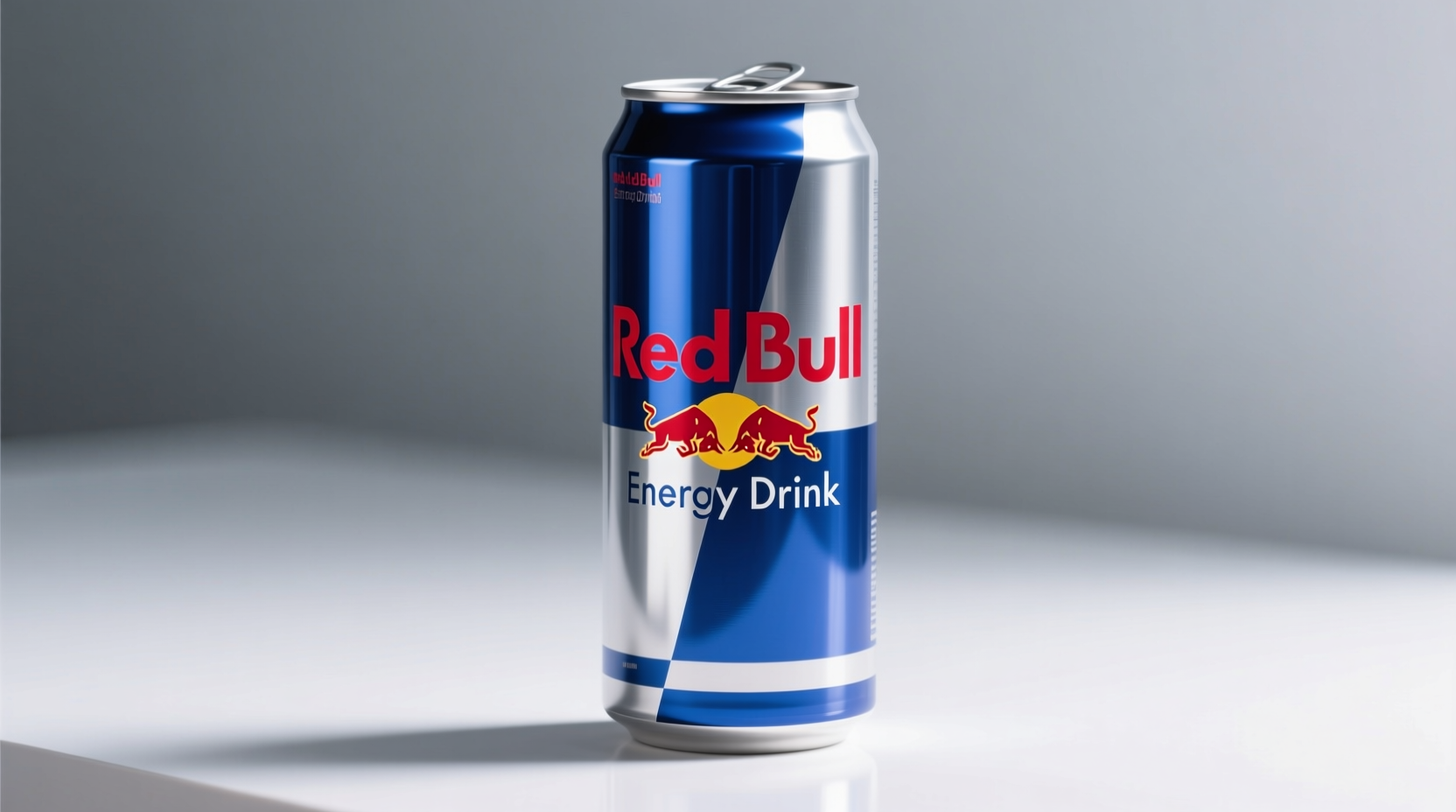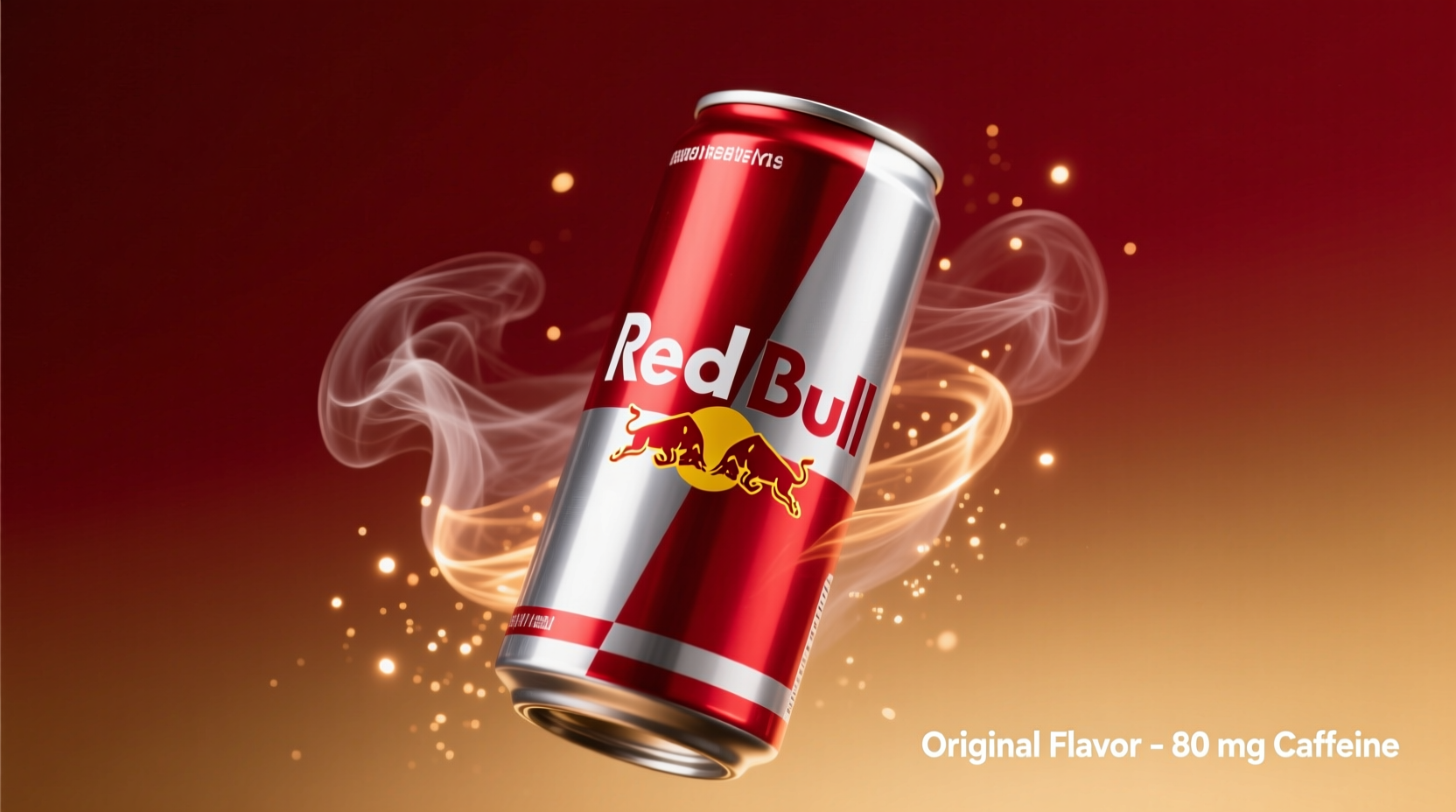When you crack open a can of Red Bull, you're greeted with a unique flavor profile that's become globally recognizable. But what exactly is the flavor of Red Bull? Understanding this requires examining both the official ingredients and the sensory experience that has made it the world's most popular energy drink.
The Science Behind Red Bull's Signature Taste
Red Bull's flavor isn't modeled after any single fruit but rather a carefully engineered combination designed to deliver both refreshment and stimulation. According to the official Red Bull website, the drink contains a blend of fruit extracts including:
- Natural citrus flavors (primarily lemon and orange)
- Berry extracts (with raspberry and cherry notes)
- Subtle herbal components (including ginseng extract)
What makes Red Bull's flavor particularly interesting is how these elements interact with the functional ingredients. The 80mg of caffeine per 8.4oz can creates a slight bitterness that's balanced by the 27g of sugar (in the original version), while taurine contributes a subtle umami note that many consumers can't quite identify but recognize as part of Red Bull's distinctive character.

How Regional Formulations Affect Red Bull's Flavor
One crucial aspect many consumers don't realize is that Red Bull's flavor varies slightly depending on where you purchase it. The sugar content and specific flavor balance differ between regions:
| Region | Sugar Content | Primary Flavor Notes | Carbonation Level |
|---|---|---|---|
| United States | 27g per 8.4oz | Sweeter, stronger citrus | Moderate |
| European Union | 26g per 8.4oz | Balanced sweet-tart, more herbal | Higher |
| Australia | 25g per 8.4oz | Subtler berry notes | Lower |
| Japan | 24g per 8.4oz | Cleaner finish, less sweet | Moderate |
These subtle variations explain why travelers often notice differences in taste when enjoying Red Bull abroad. The formulation adjustments account for regional taste preferences while maintaining the core flavor identity that consumers recognize.
Red Bull Flavor Evolution Timeline
Since its introduction in Austria in 1987, Red Bull's flavor profile has undergone careful refinement while maintaining its essential character:
- 1987-1992: Original Thai-inspired formula (Krating Daeng) was extremely sweet with stronger herbal notes, containing 50g sugar per serving
- 1992-2001: Western adaptation reduced sugar content and balanced herbal components for broader appeal
- 2002-2010: Introduction of sugar-free variants with aspartame, creating a slightly different flavor profile
- 2011-2018: Refinement of natural flavors to reduce artificial aftertaste while maintaining consistent profile
- 2019-Present: Regional sugar reduction initiatives while preserving core flavor identity through advanced flavor encapsulation technology
When Red Bull's Flavor Works Best (And When It Doesn't)
Understanding the context in which Red Bull's flavor shines can help consumers maximize their experience:
Optimal consumption scenarios:
- Chilled (34-40°F / 1-4°C) - enhances crispness and reduces perceived sweetness
- As a mixer with vodka (the classic "Vodka Red Bull") - balances the herbal notes
- During physical activity - the sweet-tart profile helps with hydration motivation
Less favorable scenarios:
- At room temperature - increases metallic aftertaste from taurine
- When extremely fatigued - reduced ability to appreciate nuanced flavor components
- After consuming strong flavors (like coffee or spicy food) - alters taste perception
Consumer Flavor Perception Analysis
Independent taste tests reveal how consumers describe Red Bull's flavor. A 2023 survey of 1,200 regular energy drink consumers showed:
- 68% described it as "citrus-berry with herbal notes"
- 15% identified specific cherry/raspberry flavors
- 9% compared it to "tropical fruit punch"
- 8% couldn't identify specific flavors but recognized it as "distinctly Red Bull"
This data from Food Sensory Research Institute confirms that while consumers struggle to pinpoint exact flavors, they consistently recognize Red Bull's unique profile.
Why Red Bull Doesn't Taste Like Regular Fruit Drinks
The distinctive flavor of Red Bull comes from its functional ingredients interacting with the flavor system. Unlike traditional fruit beverages, Red Bull contains:
- Taurine (1000mg) - contributes subtle umami notes that ground the sweetness
- B-vitamins (B3, B5, B6, B12) - create slight bitterness that balances sugar
- Caffeine - enhances perception of tartness while adding mild bitterness
- Ginseng extract - provides herbal complexity that distinguishes it from sodas
This functional ingredient matrix creates what food scientists call a "flavor anchor" - where the non-flavor components actually enhance and stabilize the perceived fruit flavors, making Red Bull taste consistently distinctive despite varying sugar levels across regions.
Red Bull Flavor Variations Explained
While the original Red Bull maintains its signature taste, the brand has expanded with several variants that modify the core flavor profile:
- Red Bull Sugarfree - Uses sucralose and acesulfame K, resulting in a cleaner finish with less lingering sweetness
- Red Bull Total Zero - Even less sweet with modified flavor system to compensate for zero sugar
- Red Bull Editions - Limited flavors like Blueberry, Coconut, and Tropical that build on the original base
- Red Bull Organics - Uses organic cane sugar and natural flavors, creating a slightly different mouthfeel
Importantly, all variants maintain recognizable elements of the original flavor profile while introducing new dimensions. This strategic approach allows Red Bull to expand its product line without alienating consumers familiar with the classic taste.











 浙公网安备
33010002000092号
浙公网安备
33010002000092号 浙B2-20120091-4
浙B2-20120091-4